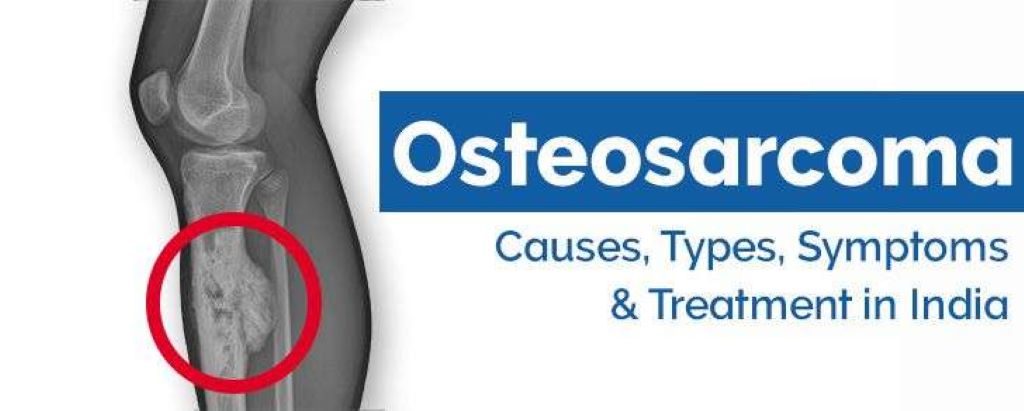It is no secret that the body’s support structure is its skeleton. Even though there are 206 large and small bones in the human body, every single one is vital to its proper operation. Our bodies are similar to intricate puzzles with bones serving as the framework; the absence of even one bone makes it extremely difficult to continue, which could even lead to a condition called “Osteosarcoma”. It is a kind of a bone cancer which you have no control.
In India, the average cost of treating bone cancer is approximately INR 5,00,000. In addition, the cost of the medication and surgery could be high. In the end, the total cost of treating osteosarcoma could come close to INR. 20 lakhs.
This is where the importance of health insurance for osteosarcoma comes in! Before diving into the importance, inclusions, and exclusions, let’s learn about the disease in detail!
What are the Different Types of Osteosarcoma and its Symptoms?
The following are the types of Osteosarcoma.
Intramedullary Osteosarcoma:
Intramedullary osteosarcoma is the most common type of osteosarcoma which accounts for about 80% of all diagnoses. The medullary cavity of a long bone, such as the femur, is where these osteosarcomas form. Depending on the type of cells that make up the tumour, there are various intramedullary osteosarcoma subgroups. Small-cell, epithelioid, chondroblastic, osteoblastic, and fibroblastic cancers are frequent subtypes in this category.
Juxtacortical Osteosarcoma:
The next most common type, accounting for 10% to 15% of all diagnoses, is juxtacortical osteosarcoma. The periosteum, or the outer layer of connective tissue covering the bones, is where these osteosarcomas develop.
Extraskeletal Osteosarcoma:
Less than 5% of cases of osteosarcoma are diagnosed with extraskeletal osteosarcoma. These tumours usually arise in areas where radiation therapy has previously been given; they develop in soft structures and are not connected to the bone.
The terms “synchronous” and “metachronous” can also be used by medical professionals to refer to the following kinds of osteosarcomas, which consist of multiple lesions in different bones. Osteosarcomas are discovered six months after they become synchronous; those that are metachronous are discovered later.
Here is the list of the symptoms and signs of osteosarcoma that you should be aware of:
- Limping.
- Inability to move a certain limb flexibly.
- Soreness around joints that may persist for months.
- Difficulty in physical exertion.
- Sudden pain while walking or moving around.
- Increased pain at night.
- Brittleness in the bone.
How is Health Insurance for Osteosarcoma Beneficial?
Confused about whether to choose health insurance for Osteosarcoma? If so, know these benefits that will make you think twice.
Quality Treatment:
The cost of healthcare is steadily rising across the nation. Furthermore, conditions like bone cancer can result in expensive medical bills that could drain your savings. Money problems prevent many people from receiving the proper care. Having critical illness insurance, however, makes it easier to receive high-quality cancer treatment without worrying about financial burdens.
Security of Your Savings:
Your savings could be depleted by a number of medical costs that go beyond hospital stays. Treatment costs may rise as a result of additional procedures such as diagnosis, out-of-pocket expenses, medical bills, etc. However, pre- and post-hospitalization costs are covered by good health insurance as well.
Peace of Mind:
Hospitalization is necessary when treating a condition like cancer. The cost of multiple tests and treatments may deplete your savings. But with critical illness insurance, you can concentrate on your care with assurance.
Tax Benefits:
In addition to providing coverage for a variety of illnesses, health insurance for Osteosarcoma also offers tax deductions. Under Section 80D of the Income Tax Act of 1961, you can claim tax deductions for premiums paid on health insurance policies.
Inclusions & Exclusions Under Health Insurance for Osteosarcoma
The following are the things covered by health insurance for osteosarcoma, but it’s best to double-check health insurance documents. Let’s discuss the inclusions first.
- Covers costs associated with ambulance transportation, daycare services, pre- and post-hospitalization, etc.
- Offers benefits for cashless hospitalization at network hospitals.
- ICU costs and room rent are paid for.
- It covers both the cost of prescription drugs and doctor visits.
Exclusions Under Health Insurance for Osteosarcoma
The following conditions are not covered under health insurance for osteosarcoma.
- Only after the waiting period has passed is coverage for pre-existing bone cancer provided.
- Hospitalization brought on by war is not covered by health insurance for osteosarcoma.
- International medical care is not covered.
Final Thoughts
The earlier osteosarcoma symptoms are identified and treatment starts, the better off you will be. It’s also critical to adhere to your doctor’s recommendations regarding the course of treatment for osteosarcoma. Getting health insurance for osteosarcoma is the best way to stay on top of things and manage to pay for any treatments that you might need. Having health insurance for osteosarcoma allows you to concentrate on getting the necessary treatment without worrying about money.








